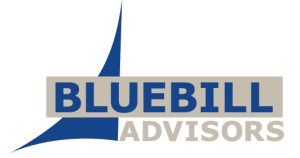Verity Inc. announced the signing and closing of the acquisition of desktop search-related intellectual property assets from 80-20 Software Pty Ltd. Verity purchased software that executes searching of all email folders and local file systems to give users one access point to information stored on their personal systems. In addition, it has enterprise-wide deployment, administration and control capabilities as well as compliance with most security protocols. The Verity-branded desktop search product is expected to become available to customers in the second half of 2005. It will integrate with Verity Ultraseek or K2 Enterprise software to allow users access to relevant content. As part of the acquisition, Verity will absorb 80-20’s desktop search engineering resources. Existing 80-20 enterprise desktop search customers will be served by Verity. 80-20 Software is exiting the Enterprise Desktop Search market in order to focus on its commitment to solutions for corporate governance, operational risk and compliance management. ,
Page 448 of 935
Archivas, Inc. announced three important advances in its Archivas Cluster (ArC) software, including integrated search and indexing capability, an increase in availability, as well as significant performance enhancements. ArC also has the ability to not only present a standard file system interface to applications, but also to store files in XML and HTML so applications are not permanently tied to the archive and as the application environment may change over time, files in ArC will always be accessible to users. ArC is generally available. http://www.archivas.com
Quadralay Corporation announced the immediate availability of WebWorks ePublisher Pro for Word. WebWorks ePublisher Pro for Word leverages XML to give users the ability to create customized content for the Web, intranets, professional online Help systems, portable devices, enterprise-ready XML, or PDFs. The new software provides greater flexibility and ease of use for Help authors, technical writers, documentation professionals, and other content providers wanting to produce content for common online formats directly from Word files. Authors can use Word to write, maintain, and update content, then use ePublisher Pro to manage and deliver multiple online formats such as HTML, XHTML, DHTML, or the cross-browser, cross-platform information system WebWorks Help. Quadralay Corporation also re-engineered its previous single-source online publishing solution for Adobe FrameMaker, which features an online content-preview window for visual style development, GUI-based advanced customizations, and an improved code editor. WebWorks ePublisher Pro for Word is available for purchase online for US$1,000, and internationally for US$1,100. WebWorks ePublisher Pro for FrameMaker ships in July 2005, and is available for purchase by authors for US$1,395, and internationally for US$1,515. In addition a listing of resellers is available. For a limited time, customers can save $250 when purchasing either product when upgrading from any competitive Help authoring tool.
Mediasurface announced the launch of version 5.2 of its content management suite. The new version includes enhancements to Morello as well as new features to allow both non-technical and IT professionals more flexibility and control when building their websites. Included are: improvements to the product installation process reducing the time and effort in the set up stage with a number of new automated installation scripts; enhanced architectural support; improved performance through enhanced caching and indexing; and user interface improvements including better table handling and form editing users can now easily insert a customised table with a single click. Expanded fields within the ‘Forms’ view and improved image editing are also included. Enhanced upload features, making it quicker and more efficient to import documents in bulk, even when they have a variety of formats. Version 5.2 is now available as a free upgrade to existing Morello customers.
NetManage, Inc. announced its Librados Data Integration Plug-In. Now, enterprise system functions and data, dynamically exposed in XML, can be mapped to a variety of data formats, including XML, database, flat file and EDI. The J2EE plug-in connects back-end enterprise system functions. The Data Integration Plug-In is incorporated into the design-time configuration environment provided with each NetManage Librados JCA Plus Adapter. Exposed through the adapter via a GUI, the user is able to select business functions in the target enterprise application, transforming or translating source system data into any format, without any programming. The Librados Data Integration Plug-In is now available as an add-on component with any of the 50 Librados JCA Plus Adapters.
Davisor, developer of Java-based multi-channel publishing and visualization solutions, is expanding its product offering for the Enterprise Publishing market. Davisor’s new product structure consists of modules and solutions, which allow customers either to build their own multi-channel publishing system or use ready-made solutions. The new Davisor Offisor consists of a group of transformation modules, which gives companies a way to build their own multi-channel publishing system. Offisor includes input modules for transforming HTML, Microsoft Word, PowerPoint and image files into XML, and output modules for producing different formats out of XML content such as XSL-FO, HTML, XHTML and RTF. With Offisor, companies can license only the transformations they need, without having to invest in large systems requiring specific file formats. Davisor solutions offer ready-to-use enterprise publishing systems for companies with specific needs. Davisor Webisor converts HTML documents with dynamic content into PDF with corporate layout. Davisor Publishor produces personalized PDF, Word, and HTML documents by merging dynamic XML content into templates produced with Word, allowing companies to produce fully personalized materials with a familiar word processor.
North Plains Systems Corp. announced that TeleScope Enterprise, its digital asset management application, will now support Tiger Server and Xsan, Apple’s 64-bit cluster file system for Xserve RAID storage hardware. TeleScope builds on Apple’s Xsan storage array in the video production, printing and publishing markets. It serves as the primary software platform for integrating and organizing media production tools such as Apple Final Cut Pro, Adobe Creative Suite, Digimarc ImageBridge, Microsoft Office, Microsoft PowerPoint, Telestream FlipFactory, QuarkXPress and Virage VideoLogger. Designed for Global 2000 customers, TeleScope Enterprise allows IT and business managers to create a digital media supply chain for the creation, management and distribution of rich media. Its SOAP-based APIs and XML gateways enable integration with existing enterprise IT investments such as enterprise content management systems, customer resources management systems, and enterprise information portals. http://www.northplains.com
Day Software announced that the JSR 170 Content Repository for Java Technology API has been approved by an industry expert group of the major players in content management. JSR 170, which has been developed under the Java Community Process (JCP) program, is designed to lessen the risks of proprietary vendor lock-in by improving the interoperability between content repositories and applications. This new standard helps companies manage content across large-scale enterprises. Day’s CTO, David Nuescheler, has lead the JSR 170 initiative by acting as the specification lead since its inception. Apache, BEA Systems, IBM, Oracle, and SAP amongst many others all serve as members of expert group for JSR 170. Other industry participants include Documentum Inc., Filenet, and Vignette. http://jcp.org

